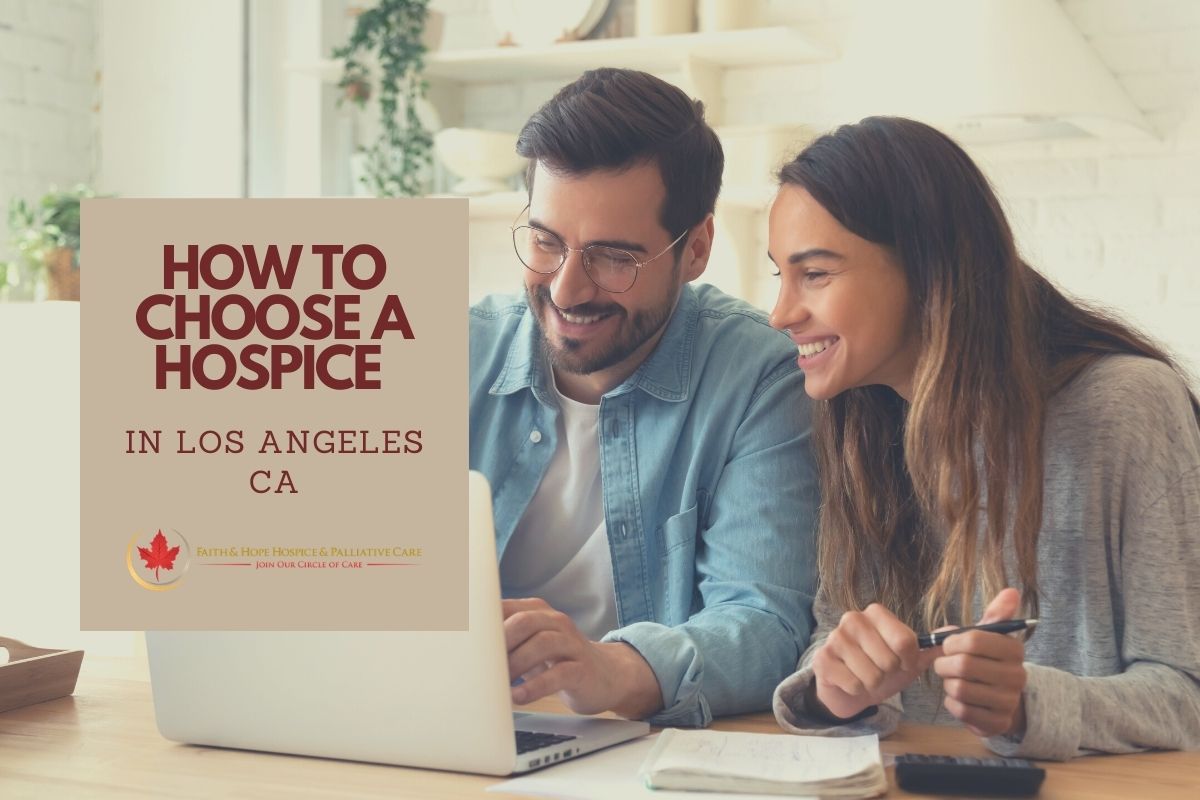
- By: administrator
- Blog
- No Comments
Finding the right hospice provider is important for both a patient and their loved ones. It can make a tremendous difference in their quality of life on a daily basis. Plus, it can offer the support that family members need in a difficult time. Given that this is such an important decision, it makes sense that people would take their time weighing their options. In order to streamline the process, here are some things to consider when you are evaluating a hospice in Los Angeles CA:

Starting the Search Process
When you are exploring hospice and palliative care in Los Angeles, you will probably notice some of the same basic services under Medicare coverage. However, each provider may also offer additional services that set them apart from the others. The best way to approach the decision process is to compare your options. So, if that’s the case for you, then you can start your search within your range of coverage. Other insurance companies may recommend a “preferred provider” that they have negotiated rates with. You can find a list of providers on your insurer’s website.
Judging Quality Care
You can do some preliminary research on hospice care by reading reviews, asking around in the community, and browsing online forums. Currently, hospice providers have to meet local and state regulations to operate as a business. However, their accreditation for services and quality care is voluntary. When you are evaluating hospice providers, check to see if they are accredited by the Community Health Accreditation Program or Joint Commission. Official agencies like these exist to judge hospice standards and practices to ensure that patients are being well served. If you find a hospice in Los Angeles California without accreditation, this does not necessarily mean that they have substandard care. However, you will need to investigate their history, experience, and reputation a little closer.
Narrowing Down Options
If you feel a little lost in the sea of hospice providers, then you may need to narrow down your list of options. Which providers have you heard by word-of-mouth? Referrals by relatives and trusted friends are one of the most common ways that people find end-of-life care. You can also request referrals from medical experts, social workers, and other professionals within the industry. Limit yourself to two or three options when you are setting up informational interviews so as not to overwhelm yourself. If you find that none of your options are ideal, then reintroduce some other options into the mix after you have gone through the first three.
Conducting Interviews
Naturally, before choosing a hospice provider, you will need to vet the company. Ask to meet with a representative and discuss their services so that you can learn more about their quality of care. There should be no charge for this appointment or obligation to hire their services. However, you should clarify this when you are scheduling the meeting. Prepare some of your own questions to ask. Here are some examples of questions that you may want to ask a hospice provider to learn more about their services:
- How quickly can care be implemented?
- How quickly can pain/other symptoms be managed?
- What is your typical response time on weekends, holidays, and outside normal business hours?
- How does the hospice address inpatient care?
- What medication, equipment, and services are not provided?
- Are there any out-of-pocket expenses?
- How is medication distributed?
- If interventions are not working, what are the hospice provider’s next steps?
- How long will hospice staff visit on a normal day?
- What experience, training, and certifications do hospice staff have?
- What are the expected responsibilities of the patient’s family?
- What kind of support does the hospice offer the family of the patient?
- How does the hospice track and manage their quality of care?
Prioritizing the Patient’s Needs
When you’re searching for end-of-life care, the patient’s needs should be above all else. What kind of medical conditions is the patient dealing with? What are their current emotional state and mental health? All of these things will determine what provider you ultimately choose. When you are interviewing hospices, you should describe the situation that the prospective patient is in and ask for their typical approach to these issues. How much experience do they have with patients who have dementia, Alzheimer’s, Parkinson’s disease, and the like? How do they adjust their system of care for more specialized conditions?
Hospice providers should have an organized procedure for emergencies and specialty care. When you are considering a hospice service, make sure to ask about their protocol for patients in extreme pain or distress. Of course, no one wants to consider these scenarios, but it is important to ask about them upfront. If you receive satisfactory answers, then you will feel more confident in the quality of care a hospice provides.
Feeling a Spark
Searching for a hospice provider does not have to feel like a chore. While it is important to hear what a hospice representative has to say about their services, it is also great to see if there is a genuine feeling of trust and confidence in their program. Is the representative open and friendly? Do they answer your questions without being condescending or judgemental? The way that the interview feels is just as important as what comes out of the representative’s mouth. Do you feel like they listened and understood your perspective? The hospice representative is the window to the hospice provider. Trust your gut and invest your time in a company that values yours.
Conclusion
While some people have a negative connotation for end-of-life care, quality providers can make this time in a person’s life extremely satisfying with pockets of joy and fulfillment. The right hospice provider will give the appropriate attention to the patient while also offering support to the patient’s loved ones and caregiver. Programs like music therapy, pet therapy, and emotional counseling continue to serve patients in their last days and help them make lasting memories with family and friends.
Contact Faith & Hope Hospice & Palliative Care at (866) 991-5268 to learn how you can receive quality end-of-life care.
